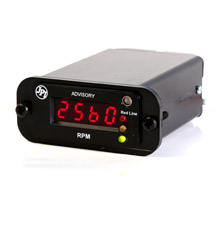 The instrument panel is intimately connected with the aircraft electrical systems – more so in the case of modern day aircraft with ultra accurate digital gauges. The reason a pilot should have a good working knowledge of aircraft electrical systems is because modern day gauges especially the volt and amp gauges can aid in detecting and diagnosing the start of potential problems. The instrument panel is intimately connected with the aircraft electrical systems – more so in the case of modern day aircraft with ultra accurate digital gauges. The reason a pilot should have a good working knowledge of aircraft electrical systems is because modern day gauges especially the volt and amp gauges can aid in detecting and diagnosing the start of potential problems.
Single and twin engine aircraft manufactured until a decade ago usually sported analog and mechanical flight instruments in the cockpit. The mechanical flight instruments included the attitude indicator, airspeed indicator, vertical speed, directional gyro, oil pressure indicator, tachometer, suction gage, magnetic compass and stall warning indicator.
The analog / electrical flight gauges or instruments in single and twin engine aircraft included the pitot heater, oil temp gauge, Exhaust gas temperature gauge (EGT), Fuel gages, Engine hour meter (“Hobbs”), Turn-and-Slip indicator, Turn coordinator and of course the Clock.
Malfunctions in electrical power supply system of single and twin engine aircraft can be detected by looking at the volt gauge and the amp gauge. A low-voltage warning could indicate a broken alternator drive belt or a wiring come lose especially if it was soldered and wrong type of soldering used.
After roughly 30 minutes of flight, Airplane Gauges should be registering a small charging current. If however, the charging rates seems to remain unchanged, the battery would heat up quickly and likely be damaged due to excessive electrolyte evaporation.
Also, it is not just the battery in the aircraft that will be damaged by higher than normal amps - Sensitive electronics too could get ‘fried’ especially if the over-voltage protection in an analog system fails and this is one of the fundamental reasons for switching over to modern digital gauges for single and twin engine aircraft.
Modern gauges for single, twin and four engine aircraft rely on IC (integrated Circuit) chips, relays, sensors and sensitive probes rather old-fashioned fuses or bi-metallic thermocouple strips. Consequently, source of electrical problems in the aircraft are easier to detect. In turn this makes maintenance more precise and effective. Contrary to popular belief, modern digital gauges are not expensive. In fact, when we look at the enhanced safety and reduced maintenance costs, it definitely makes sense to switch over to EGT gauge flight instruments.
In any case, as a rule of thumb it is a good idea to check all electrical connections and joints for corrosion and oxidation as these can be potential reasons for voltage drops caused by high electrical resistance. Low voltages could also lead to malfunction or inaccurate data especially in older aircraft sporting analog flight gauges.
|